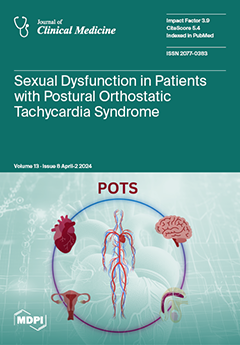Background: The care of psoriatic patients requires a multidisciplinary approach that addresses not only skin involvement but also cardiovascular risk factors. Coordination between dermatology and internal medicine departments, with a specific focus on treatment and long-term follow-up, can substantially improve the course of a disease and its associated complications. Objective: to evaluate the effects of the holistic management of patients with psoriasis by a multidisciplinary team consisting of dermatology and internal medicine specialists.
Methods: We conducted an observational, prospective, single-center case–control study between October 2016 and December 2019 in San Jorge University Hospital (Huesca, Spain). Cases included patients undergoing follow-up in the combined dermatology and internal medicine clinic. The control group consisted of an equivalent number of randomly selected, age- and sex-matched patients with moderate-to-severe psoriasis who were seen in the general dermatology department of the same hospital during the same time period. Main outcomes and measures: The primary outcome was the control of psoriatic disease and cardiovascular risk factors such as weight, blood pressure, waist circumference, body mass index (BMI), SCORE index (Systematic Coronary Risk Evaluation), and blood test parameters, as well as diet, physical exercise, and habits such as tobacco and alcohol consumption. To compare data collected over time, data were grouped into three time periods: baseline (t1), intermediate (t2), and final (t3).
Results: The case group consisted of 27 patients, and the control group consisted of 25 patients. Multivariate analysis was used to evaluate the relationship between the 10-year risk of experiencing a cardiovascular event (SCORE) and the clinical characteristics and analytical variables of patients with psoriasis and controls (
n = 52). The variables that were significantly associated with a higher 10-year risk of experiencing a cardiovascular event were age (OR, 1.33; CI95% 1.21–1.50;
p < 0.001); smoking (OR, 5.05, CI95% 1.07–27.37;
p = 0.047); PASI (OR, 7.98, CI95% 2.32–35.86;
p = 0.003); BSA (OR, 1.22, CI95% 1.01–1.49;
p = 0.044); and being a control patient (OR, 3.26; CI95% 0.84–13.56;
p = 0.029).
Conclusions: Pharmacological and behavioral interventions carried out as part of the procedure of the multidisciplinary clinic resulted in improvements in the following variables relative to the control group: PASI, BSA, DLQI, PSOLIFE, lipid profile, insulin and HOMA-IR GGT levels, vitamin D levels, and SCORE. These findings indicate the beneficial effect of the multidisciplinary clinic, which reduced the risk of cardiovascular events in psoriatic patients with metabolic comorbidities.
Full article






